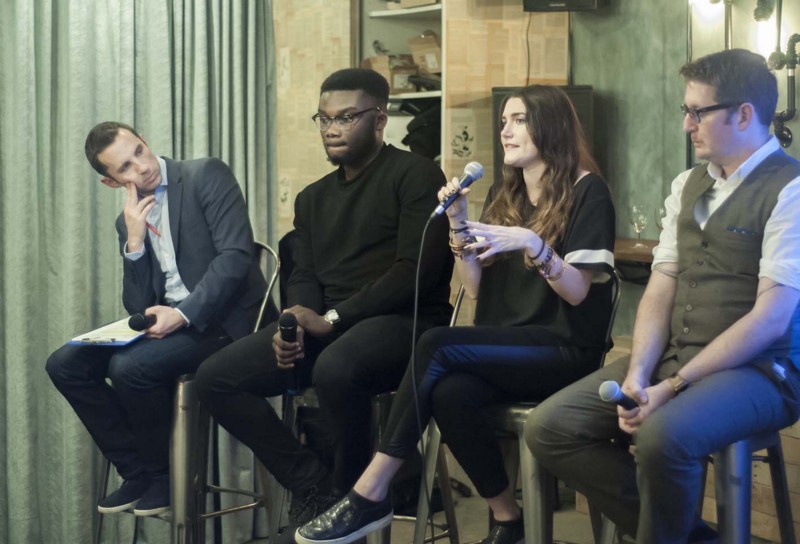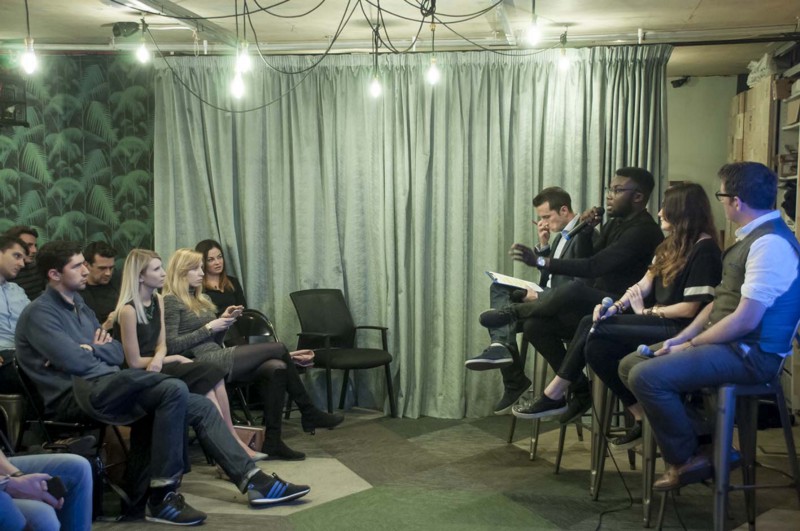Our latest Ignyte Series event brought together a diverse trio of experts from wildly different backgrounds, all with their own views and experience on the art and science of powering a product.
Tim Armoo, 21-year-old founder of Fanbytes, the UK’s largest video influencer platform; Jessica Riches, digital strategist specialising in social media , content & growth and Pete Trainor, author of “Hippo — The Human Focused Digital Book” which takes a philosophical look at digital, design and technology. The panel was moderated by Hristo Boyadzhiev, CEO of Despark.
In this post we give an overview of key takeouts from the panel conversation. This will be of use to anyone looking for some advice on how to successfully develop, launch and grow a product (you can also download this article at the bottom of the page).
Conceptualising
Do your research
With all the user-generated qualitative and quantitative data that social media allows us to access, there’s no more need for guesswork when it comes to developing your product. “If you read through people’s tweets about the area you’re targeting and what they want and certain types of product, then you’re not guessing anymore” Jessica posited. As a first point of call and before you want to actually talk to people about your product, it makes perfect sense.
Gather user feedback
Tim agreed and mentioned the power of tools like Launchrock to quickly gather user feedback and actually involve potential users in the design and development stage. “That iterative process is definitely the way to go”.
“Social media also helps you test an idea or a personality of an idea” said Jessica. “There’s so many different ways you can do that whether that’s running these ads and seeing if they get any clicks. That’s a really easy way to tell if anybody would actually be interested in that product. That’s a relatively low investment and there’s ways that you can do that organically as well.”

“If you can please your niche very well you’re in a much better place than if you’re just trying to have little things that appeal to everyone”
Jessica Riches
Human Behaviour
Hyper-personalise your product
“They’re not users; they’re humans” Pete stressed when probed about what product makers should be studying in their potential customers’ behaviour and how to harness that information.
“The businesses that are able to harness the big data that they collect or tap into multiple API are going to take a massive stride on the businesses that are very focused on the end of their nose. This idea that you can use massive amounts of environmental information or massive amounts of behavioural information to help hyper-personalise an experience for people is a really powerful thing. The businesses that are winning in this space are the likes of AirBnB, Twitter and Facebook.”
Please your niche
“If you can please your niche very well you’re in a much better place than if you’re just trying to have little things that appeal to everyone” Jessica reasoned. “It’s just knowing who your audience is and what they want.”

How do you want someone to feel when they use your product? Measure that feeling. - Pete Trainor
Measuring Value & Success
Retention is more important than downloads
“I think that the chief thing to look at is retention” said Tim. “It’s like — oh, if we obscure it by saying it got 100,000 downloads, no-one’s going to realise that we only have 500 people coming back every day. We’ve done campaigns with brands where they say ‘I want to get half a million downloads’… but do you really want that, or do you want 50,000 users who are super engaged?” He also recalled incurring the wrath of various advertising executives at another event by claiming that “impressions are bullshit!”
Measure how you want your customers to feel
Pete believes that it’s time to move away from the “harder” metrics of success into the “softer”, more humanistic ones. “Something that we stole from Apple is — how do you want someone to feel when they use your product? And then measure that. If you engage someone in this way, you’re more likely to have more retention.”
Benchmark against yourself, not others
While you’re measuring the success of your product, beware of benchmarking yourself against the biggest incumbents. “You need to be measuring against yourself” suggested Jessica. “It’s useless to compare yourself to those benchmarks because you’re never going to be able to be experiencing exactly the same experience for your customers.”
Focus & Segmentation
Don’t treat all potential customers the same
Our panel were in agreement over the perils of not knowing who your product is aimed at. “The biggest mistake we’ve ever made with one of our products was treating all of our customers as one monolithic thing, whereas the best thing to have done was to segment properly” recalled Tim.
Don’t try and be all things to all people
“The main thing that I’ve seen people fail on is having a really scattergun approach” continued Jessica, “and that was preventable if we’d have done more research into who we were speaking to at the start.”
The coolest stuff you see is from the people who are on the edges of their industry. No-one ever got big by playing it safe. - Tim Armoo
Marketing
Make your comms as useful as your product
So you’ve made a product that is useful. But are you going to use your comms channels in a similarly useful way? “You’re not just competing with other brands on social media; you’re competing with people’s friends, family and interests too” Jessica said. “So you’ve got to grab their attention in a way that provides utility just as your product does. Just reproducing your sales messaging is not the way to cut through.” Utility here could take many forms: something informative, entertaining or inspiring, for example.
Don’t play it safe
“Say something that’s worthy of a remark, whether that’s positive or negative” stresses Tim. “Too many brands play it cool. Nothing happens in the middle. All the magic happens at the edges. The coolest stuff you see is from the people who are on the edges of their industry. No- one ever got big by playing it safe.”

